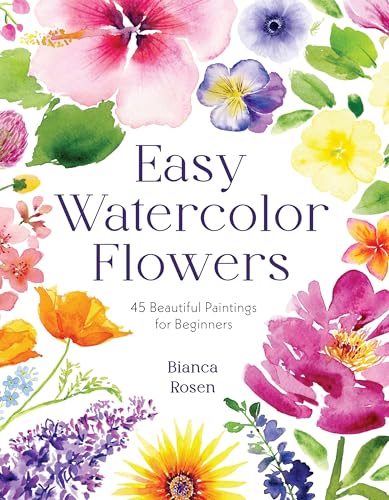Dive into Watercolor: Beginner-Friendly Workbooks and Essential Supplies
Are you ready to unleash your inner artist and explore the beautiful world of watercolor painting? Whether you’re a complete novice or just looking to brush up on your skills, a beginner-friendly watercolor workbook can be your best friend. This article will guide you through what to look for in a great workbook and explore other essential watercolor painting supplies to kickstart your artistic journey.
Why Choose a Watercolor Workbook for Beginners? 📚
Watercolor painting can seem intimidating at first. The fluidity of the paint and the potential for muddy colors can discourage new artists. That’s where a well-designed watercolor workbook comes in.
The Benefits of a Structured Learning Approach
- Guided Practice: Workbooks provide step-by-step instructions and exercises, eliminating the guesswork and helping you build confidence.
- Skill Development: From basic washes to blending techniques, workbooks cover essential watercolor skills in a logical progression.
- Reduced Frustration: By focusing on specific techniques and projects, workbooks minimize the overwhelm often associated with starting a new hobby.
- Convenience: Having all the lessons and practice pages in one place makes learning watercolor easier and more organized. Think of it as your personal, portable art teacher!
What Makes a Watercolor Workbook Beginner-Friendly? 🔎
Not all workbooks are created equal. Look for these key features when choosing a beginner-friendly option:
Clear and Concise Instructions
The instructions should be easy to understand, even if you have no prior art experience. Avoid workbooks with jargon or overly complicated explanations.
Step-by-Step Projects
Begin with simple projects that gradually increase in complexity. This allows you to build your skills and confidence as you progress.
Practice Pages
Sufficient practice pages are crucial for mastering different techniques. Look for workbooks that offer ample space for experimentation.
Color Mixing Guides
Understanding color theory is essential for watercolor painting. A good workbook will include color mixing charts and tips to help you create a wide range of hues.
Quality Paper
The type of paper used in the workbook is important. Look for paper that is specifically designed for watercolor, which is usually heavier weight (at least 140 lb) and has a textured surface.
Essential Watercolor Supplies Beyond the Workbook 🖌️
While a workbook is a great starting point, you’ll also need some basic supplies to start painting:
Watercolor Paints 🌈
- Student Grade vs. Professional Grade: Student-grade paints are more affordable and perfect for beginners.
- Pan Sets vs. Tubes: Pan sets are convenient for travel, while tubes offer greater control over color mixing. A good starter set with basic colors is ideal.
Watercolor Brushes 🖌️
- Round Brushes: Versatile for various techniques, including washes and details.
- Flat Brushes: Ideal for creating even washes and straight lines.
- Synthetic vs. Natural Hair: Synthetic brushes are more affordable and durable.
Watercolor Paper 📄
- Cold Press: Textured surface, good for beginners.
- Hot Press: Smooth surface, better for detailed work.
- Paper Weight: 140 lb (300 gsm) is recommended to prevent buckling.
Other Useful Tools 🛠️
- Palette: For mixing paints. A plastic or ceramic palette works well.
- Water Container: To clean your brushes.
- Paper Towels: To blot excess water and clean up spills.
- Masking Tape: To secure your paper to a board or desk.
Taking the Plunge: Your Watercolor Adventure Awaits! 🚀
With the right workbook and essential supplies, you’ll be well on your way to creating stunning watercolor paintings. Don’t be afraid to experiment, make mistakes, and most importantly, have fun! Remember that learning watercolor is a journey, and every stroke you make brings you closer to mastering this beautiful medium. Happy painting! 🎨





Post Comment